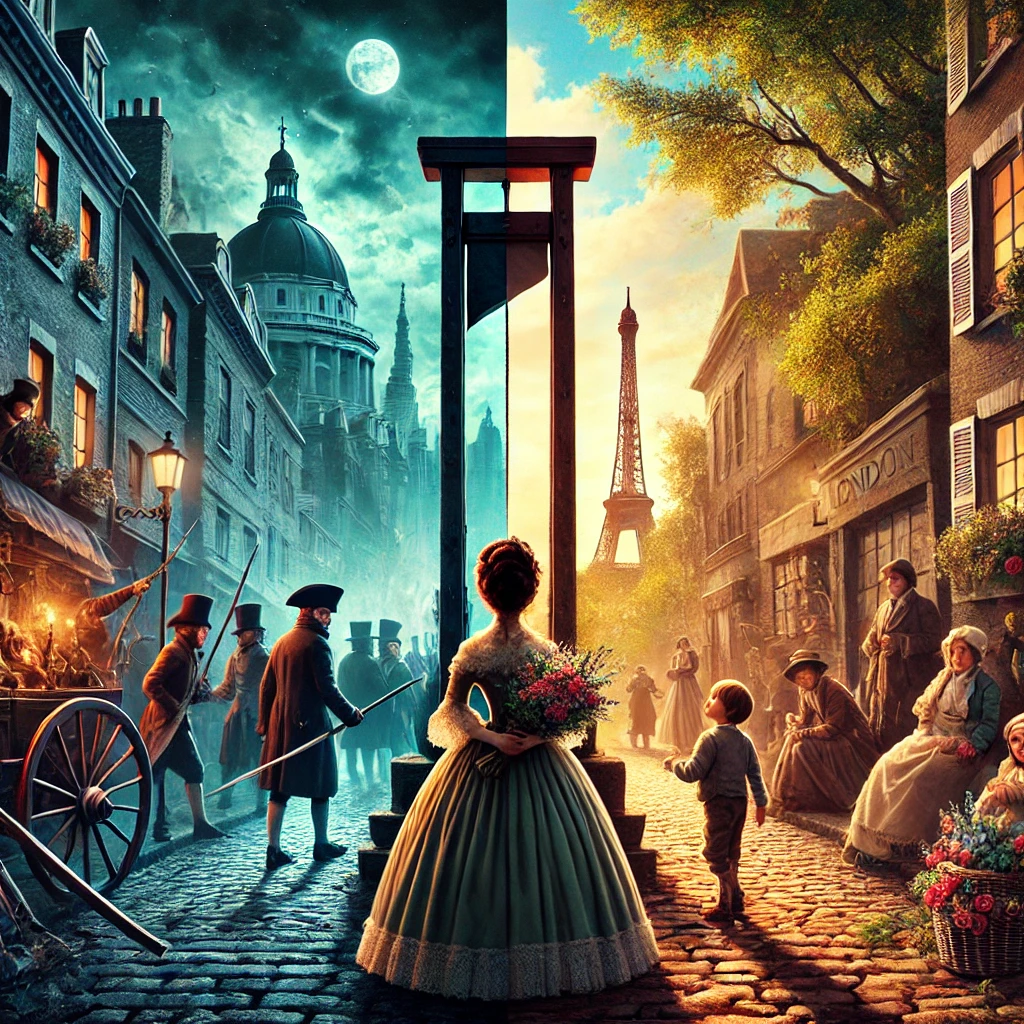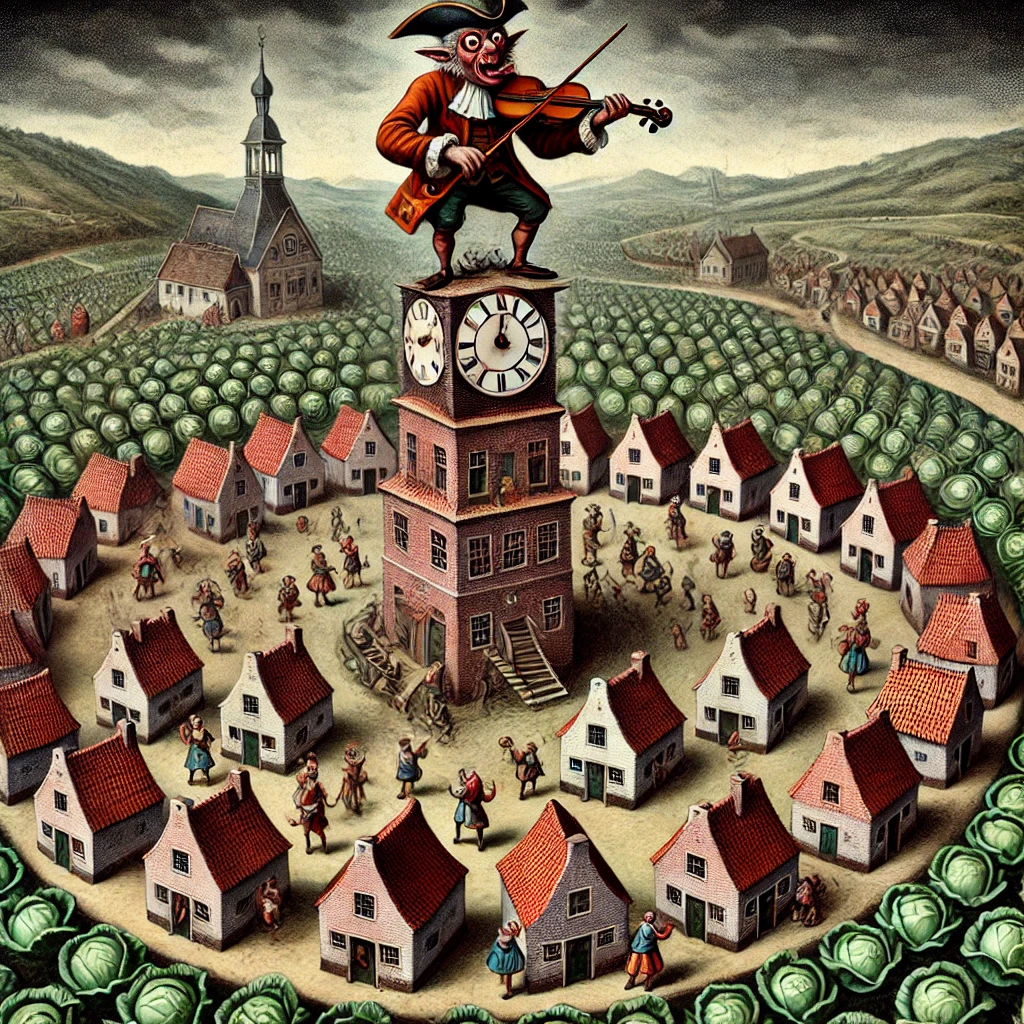The Rainbow by D.H. Lawrence, first published in 1915, is a seminal work of modernist literature that explores the lives of three generations of the Brangwen family living in rural England. Set against the backdrop of the industrial revolution, it delves into the complexities of relationships, individual desires, and the evolving roles of women and men in society. Lawrence’s portrayal of human emotions and his frank discussions on love, sexuality, and personal identity led to the book’s initial censorship, but it has since been recognized as one of his greatest works.
Plot Summary
In the quiet expanse of the English countryside, the Brangwen family has long worked the fertile land of Marsh Farm, drawing their strength from the earth. For generations, they live contentedly, their lives shaped by the rhythms of the seasons and the weight of tradition. The men toil in the fields, their bond with the land deep and unspoken. But as time passes, a restlessness grows among the Brangwen women, who yearn for more than the narrow world that confines them.
Tom Brangwen, the solid head of the family, is content with his place on the farm until his life changes when he meets Lydia Lensky. A Polish widow who carries a haunting air of mystery, Lydia is unlike anyone Tom has known. Her quiet reserve, her past as the wife of a political exile, draws him to her. She agrees to marry him, and they build a life together, but there is always a distance between them—Tom, rooted in the tangible world of the farm, and Lydia, living in the shadow of a lost life. The marriage brings a sense of stability, but it is also marked by Tom’s struggle to understand the depths of Lydia’s soul, which remains elusive to him.
Anna, Lydia’s daughter from her first marriage, grows up in the care of Tom, who treats her as his own. As she matures, Anna is filled with the same yearning that once stirred in her mother. She marries Will Brangwen, Tom’s nephew, and their union is passionate but fraught with tension. Will is an artisan, deeply connected to the world of craft and creation, but like Tom before him, he cannot fully understand his wife. Anna craves freedom, and though they share an intense physical relationship, they often find themselves at odds. Their love burns hot but is never completely harmonious.
As their children are born, the passion that once consumed Anna and Will slowly transforms. They settle into their roles, but there is always an undercurrent of dissatisfaction. Anna, fiercely independent, wants more than what her marriage and motherhood offer. Will, too, is restless, caught between his desire for Anna and the spiritual yearnings that pull him in another direction. He finds solace in his love of building and carving, but his inner life is conflicted, torn between his love for his wife and a sense that something is missing.
Among their children is Ursula, who will not accept the limits that have confined her mother. From a young age, Ursula is determined to live life on her own terms. She grows up surrounded by the countryside, the fields, and the slow, steady pulse of rural life, but unlike the generations before her, she does not feel bound to the land. She wants more than the farm, more than marriage and children. Her intellect and ambition push her beyond the traditional roles laid out for women, and she dreams of a life filled with knowledge and experience.
As she enters adulthood, Ursula’s path diverges sharply from her parents’. She goes away to school, pursuing education as a means of escape, and in doing so, begins to see the world through different eyes. Her relationships with men are as passionate as those of her parents, but Ursula’s desires extend beyond mere physicality. She seeks understanding, equality, and personal freedom. Her first experiences of love and intimacy are intense, but they leave her questioning the nature of fulfillment and the roles that men and women are expected to play. She cannot reconcile herself to the idea of a life defined solely by marriage and domesticity.
The shadow of the industrial world looms large as Ursula grows older. The quiet, pastoral world of her ancestors is changing, with factories rising in the distance and the old ways of life slowly disappearing. The arrival of modernity both excites and unsettles Ursula, who sees in it the possibility of freedom but also the loss of something essential. Her journey is one of self-discovery and rebellion, as she fights to carve out a place for herself in a world that seems designed to limit her.
Ursula’s independence is tested as she enters a romantic relationship with Anton Skrebensky, a soldier whose life is shaped by duty and the demands of the empire. Their love affair is passionate, but Ursula soon realizes that Anton’s worldview is fundamentally different from hers. He represents the kind of man who seeks control and order, whereas Ursula craves spontaneity and freedom. Their relationship falters as Anton’s adherence to societal norms clashes with Ursula’s desire to break free of them.
In her growing disillusionment, Ursula grapples with the question of whether true freedom is possible. She rejects Anton’s offer of marriage, unable to accept a life of submission, even for the sake of love. She watches as the world around her changes, with war on the horizon and the industrial age sweeping away the old, rural England. As the last of the Brangwens tied to Marsh Farm, Ursula stands at the crossroads between the past and the future, trying to find her place in a world where the certainties of previous generations no longer apply.
In the end, Ursula realizes that her search for meaning is ongoing. She refuses to settle for a life of quiet resignation, knowing that her journey toward self-understanding is far from complete. As the seasons change and the world moves on, Ursula remains determined to live according to her own rules, even as she is unsure of where that path might lead.
Main Characters
Tom Brangwen: The patriarch of the Brangwen family, Tom is a farmer whose life revolves around his connection to the land and traditional ways of living. He marries Lydia Lensky, a Polish widow, and struggles to understand her distant, intellectual world. His character represents the conflict between physical and emotional desires.
Lydia Lensky: A Polish widow and Tom’s second wife, Lydia embodies a sense of mystery and emotional depth. While she forms a stable life with Tom, her past and her intellectual curiosity set her apart. Her quiet demeanor contrasts with Tom’s earthy vitality, reflecting a gap in their emotional connection.
Anna Brangwen: Tom’s stepdaughter and Lydia’s child from her previous marriage, Anna grows up under Tom’s care and later marries her cousin, Will. Her life represents the search for personal fulfillment amidst the conventional roles of wife and mother. Her passionate but turbulent relationship with Will is central to the novel.
Will Brangwen: Anna’s husband, Will is a carpenter and craftsman who has a deep inner life, full of artistic and spiritual yearnings. His relationship with Anna is marked by intense passion, but he is constantly frustrated by his inability to connect with her on a deeper emotional or spiritual level.
Ursula Brangwen: The daughter of Anna and Will, Ursula is the third generation of Brangwens and the central figure in the latter half of the novel. She seeks independence and self-realization, challenging the traditional roles expected of women. Her character represents a modern, liberated woman who seeks intellectual and sexual freedom.
Theme
Generational Conflict and Continuity: The novel spans three generations of the Brangwen family, focusing on how each struggles with the constraints of society and personal desire. It examines how the past influences future generations, with each new member of the family seeking to break free from or reconcile with inherited traditions.
Love and Sexuality: One of the most prominent themes, The Rainbow explores the nature of love, marriage, and sexual relationships in great depth. The intense passion between Anna and Will, and later Ursula’s experiences, are portrayed with striking realism, emphasizing both the spiritual and physical aspects of love.
Individualism vs. Social Conformity: Many characters in the novel, especially Ursula, seek to break free from the societal expectations imposed on them. Lawrence critiques the limitations of traditional roles—especially those of women—and advocates for personal freedom and self-expression.
Nature and Industrialization: The novel contrasts the pastoral, agricultural life of the Brangwen family with the encroaching industrial world. The connection to the land is seen as a source of vitality and tradition, but also as something that limits personal growth. The looming presence of industry reflects the broader societal changes happening in England at the time.
Writing Style and Tone
Lawrence’s writing in The Rainbow is both lyrical and probing, with an intense focus on the inner lives of his characters. His prose often moves seamlessly between vivid descriptions of nature and deep psychological insight. Lawrence’s style is notable for its sensuality, as he delves into the physical and emotional complexities of his characters’ relationships, particularly their sexual dynamics. His descriptions of the natural world serve as metaphors for human emotions, with the changing seasons and landscapes mirroring the internal shifts within his characters.
The tone of the novel is contemplative and often somber, reflecting the characters’ struggles with identity, relationships, and societal expectations. There is a tension between hope and disillusionment, as characters yearn for personal fulfillment but are often thwarted by the realities of their lives. Lawrence’s use of free indirect discourse allows readers to enter the minds of his characters, heightening the sense of intimacy and psychological complexity. This style reflects the modernist movement’s focus on the inner consciousness and the fragmented nature of human experience.
We hope this summary has sparked your interest and would appreciate you following Celsius 233 on social media:
There’s a treasure trove of other fascinating book summaries waiting for you. Check out our collection of stories that inspire, thrill, and provoke thought, just like this one by checking out the Book Shelf or the Library
Remember, while our summaries capture the essence, they can never replace the full experience of reading the book. If this summary intrigued you, consider diving into the complete story – buy the book and immerse yourself in the author’s original work.
If you want to request a book summary, click here.
When Saurabh is not working/watching football/reading books/traveling, you can reach him via Twitter/X, LinkedIn, or Threads
Restart reading!








